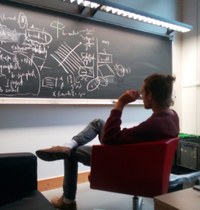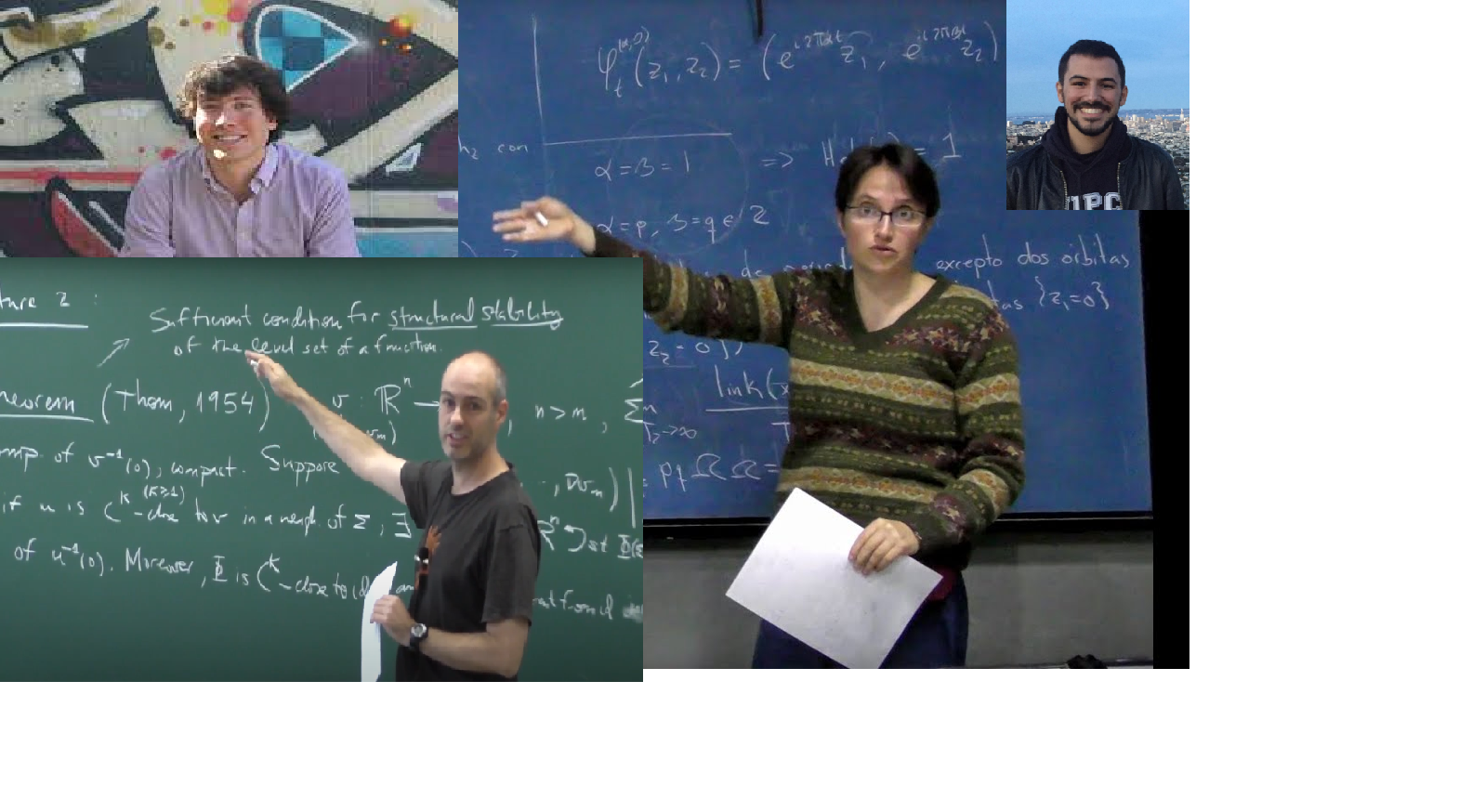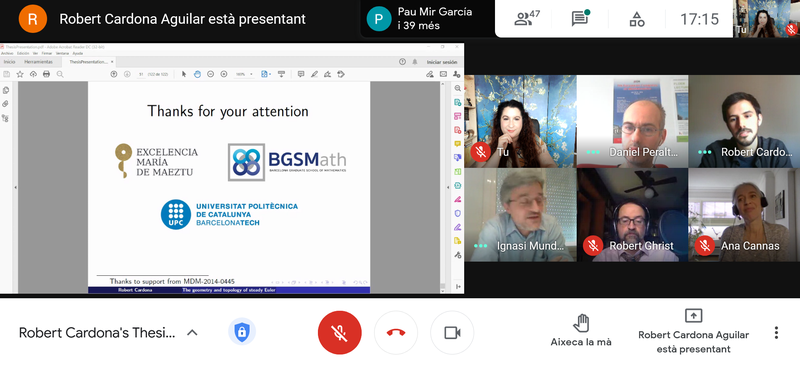The Geometry and Topology of Fluid Dynamics
May 18, 2021
In this workshop we plan to discuss some open problemes in the Geometry, Topology and Dynamics of Fluids Dynamics. Date: Monday 31 May Main speakers are: Daniel Peralta-Salas (ICMAT) Ana Rechtman (Strasbourg) Francisco Torres de Lizaur (Toronto) Talks will take place in the afternoon here: https://meet.google.com/ckx-yntx-qtd
In this workshop we plan to discuss some open problems in the Geometry, Topology and Dynamics of Fluids Dynamics as a celebration of Robert Cardona's thesis.
Main speakers are: Daniel Peralta-Salas (ICMAT)
Ana Rechtman (Strasbourg)
Francisco Torres de Lizaur (Toronto)
Chairman: Cédric Oms

Talks will take place in the afternoon of May 31 here: https://meet.google.com/ckx-yntx-qtd
Talks start at 16h.
16h: Daniel Peralta Salas
My favourite open problems on the stationary Euler equations
16:45h: Ana Rechtman
Genus and sections for 3D flows
Genus is related to flows on at least two ways. First, when a flow on a closed 3-manifold admits a Birkhoff section (or even better a section), one can study the dynamics of the flow by studying the first return map. Transitive Anosov flows admit Birkhoff sections and an open problem is to know if they admit a Birkhoff section of genus 1. I will explain why this conjecture is important to the classification of these type of flows.
Genus has also been studied with the aim of finding an asymptotic invariant, in the flavour of the helicity. Several attempts to define such an invariant have failed, and partial have succeed. I will review some of these results and present work in progress in this direction.
17:30: Francisco Torres de Lizaur
Approaching 2D steady euler flows
Given any function on a surface, can we rearrange it with an area preserving diffeomorphism, so that it becomes the vorticity of a steady Euler flow? The answer is: not always (Khesin and Ginzburg, 1994; Khesin and Izosimov, 2017). Still, can we rearrange it so that it is very close? This is the question we will address in this talk.


Share: